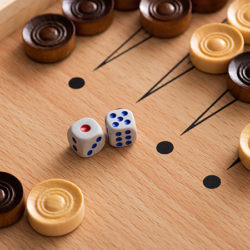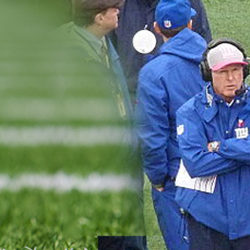
Backgammon has been one of my favorite ways to spend time with my family over the years. When we first started playing, we kept the game simple: whoever was the first to remove all their stones won. Over time, we learned that there’s more to the game than just winning; the margin by which you win matters too. For example, removing all your stones while your opponent still has 15 on the board is a stronger win than if they only have one stone left. Backgammon even awards extra points for certain achievements: a “gammon” (clearing your stones before your opponent gets all their stones into their home board) or a “backgammon” (clearing your stones while your opponent still has pieces in your home board).
Close Enough in Backgammon
Another fascinating aspect of Backgammon is the Doubling Cube. At certain points in the game, a player can propose doubling the points at stake. The opponent can either accept and continue playing for twice the points or reject the double, conceding the current game and losing the initial points. This introduces an interesting strategic question: when should you accept a double?
Let’s ignore the possible impact of gammons/backgammons and say that you only have one chance to accept a double, and then the cube is out of play. The math shows that you should accept a double if your chance of winning is greater than 25%. If it’s less than 25%, you’re better off conceding. Why? Because the expected value of continuing to play is less than conceding. Once you’ve reached a 76% chance of winning, you can confidently offer a double, knowing that your opponent should concede. You don’t need to push for a guaranteed 100% win; getting “close enough” is often good enough.
Close Enough in Golf
This idea of “close enough” also shows up in golf. While I’m not a golfer, I’ve learned about the concept of a “gimme.” If a golfer is close enough to the hole, their opponent might concede the next stroke, assuming they’ll make it. It’s a courteous gesture, common among friends but not in professional play. The gimme removes the risk of a mistake—like a shaky stroke—and lets the player move on without actually sinking the ball. Essentially, getting close enough changes the dynamic. You don’t need perfection; proximity can be just as good.
Close Enough in Chess
One other example of this phenomenon is resignation in chess – in high level matches, it is considered appropriate for a player to resign when the other player gets a decisive advantage/clearly winning position. Even though resignation always sacrifices *some* equity, forcing a winning player to actually execute the winning moves is often considered unsportsmanlike. Players would typically prefer to use the remaining time to rest or prepare for further matches. That preparation time is usually worth more than the game equity forfeited by resignation.
Close Enough in Football
The NFL is another place where the concept of “close enough” comes into play. Week 18 of the season often brings decisions that might seem odd if you’re focused solely on winning individual games. Teams have broader goals, like playoff success, which sometimes means resting players or making seemingly conservative choices.
Take the Philadelphia Eagles, for example. By Week 17, they had secured their playoff spot and seed. Their Week 18 game against the Giants wouldn’t change their postseason chances, but injuries to key players could hurt their future performance. To mitigate risk, they decided not to start their star running back, Saquon Barkley. While this was a smart team decision, it came at a personal cost for Barkley. He was just 101 yards away from breaking Eric Dickerson’s 40-year-old single-season rushing record. Barkley averaged 125 rushing yards per game, and the Giants’ defense ranked poorly against the run, making the record achievable. Yet, the team prioritized their playoff prospects over individual glory.
Contrast this with what happened with Mike Evans of the Tampa Bay Buccaneers. Evans came into Week 18 with 915 receiving yards for the season. He had a personal streak of 10 consecutive seasons with over 1,000 receiving yards, just one season shy of the record held by Hall of Famer Jerry Rice. Additionally, Evans had a financial incentive: if he reached 1,000 yards, he would earn a $3 million bonus. By the final seconds of the game, Evans had 8 receptions for 80 yards. The prudent play would have been for the Buccaneers’ quarterback to take a knee and let the clock run out, securing their 8-point lead. Instead, the coach called for a short pass to Evans, ensuring he reached 1,000 yards, secured his bonus, and extended his streak.
Conclusion
So why the difference? In Backgammon, the Doubling Cube changes the stakes when you’re “close enough.” In golf and chess, proximity to the win is good enough. And in the NFL, getting close to a milestone can shift the priorities of both players and teams. For the Eagles, the team’s broader goal of playoff success outweighed Barkley’s personal record. For the Buccaneers, enabling Evans to reach his milestone didn’t put the team in too risky a position, while still allowing them to reward a long-time contributor.
These decisions reveal something important: success isn’t always about maximizing every opportunity. Sometimes, being “close enough” to a larger goal is sufficient to influence choices. For Barkley and Evans, their situations illustrate how individual and team priorities can intersect in surprising ways.
As an Eagles fan, I’ll admit I would’ve loved to see Barkley break the record. But as a fan of strategy, I find these moments fascinating. They remind us that decisions in games, sports, and even life are often about balancing immediate gains with long-term goals. Whether it’s conceding in Backgammon, accepting a gimme in golf, or making strategic calls in the NFL, “close enough” can sometimes be just as meaningful as going all the way.




Subscribe Now
Get each new post sent straight to your inbox